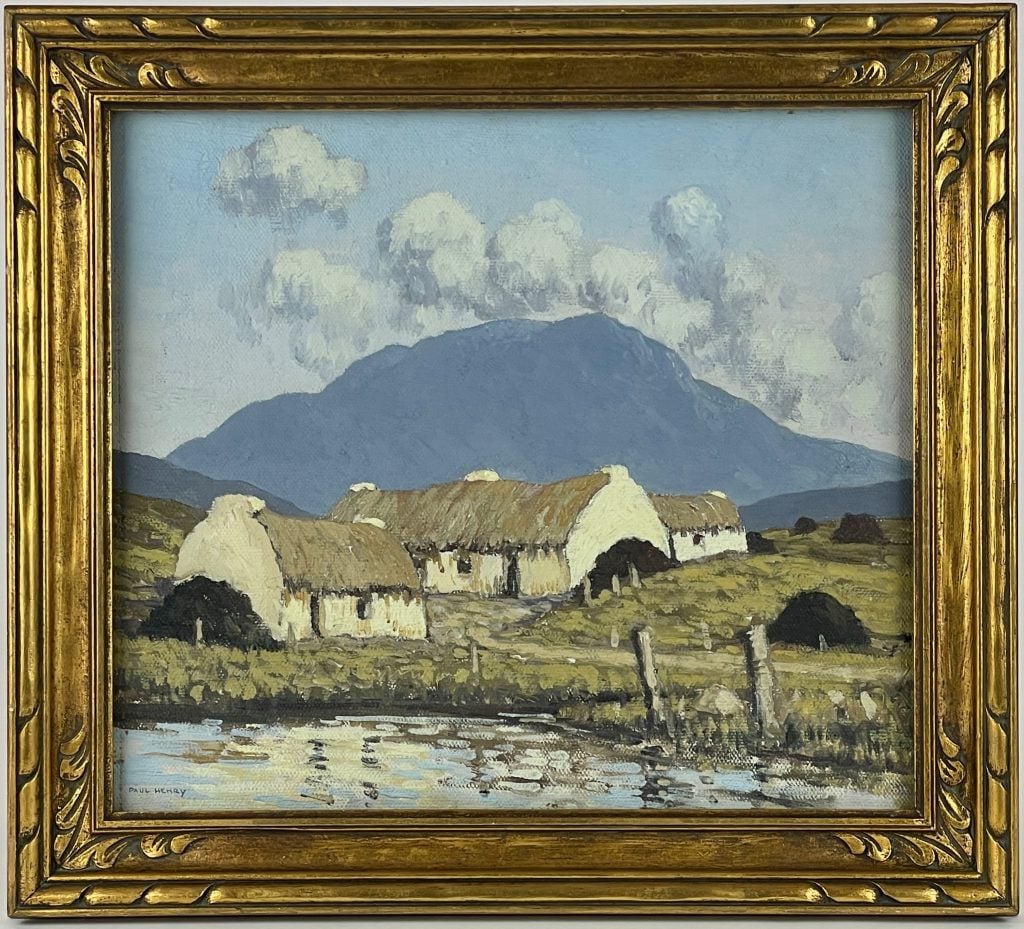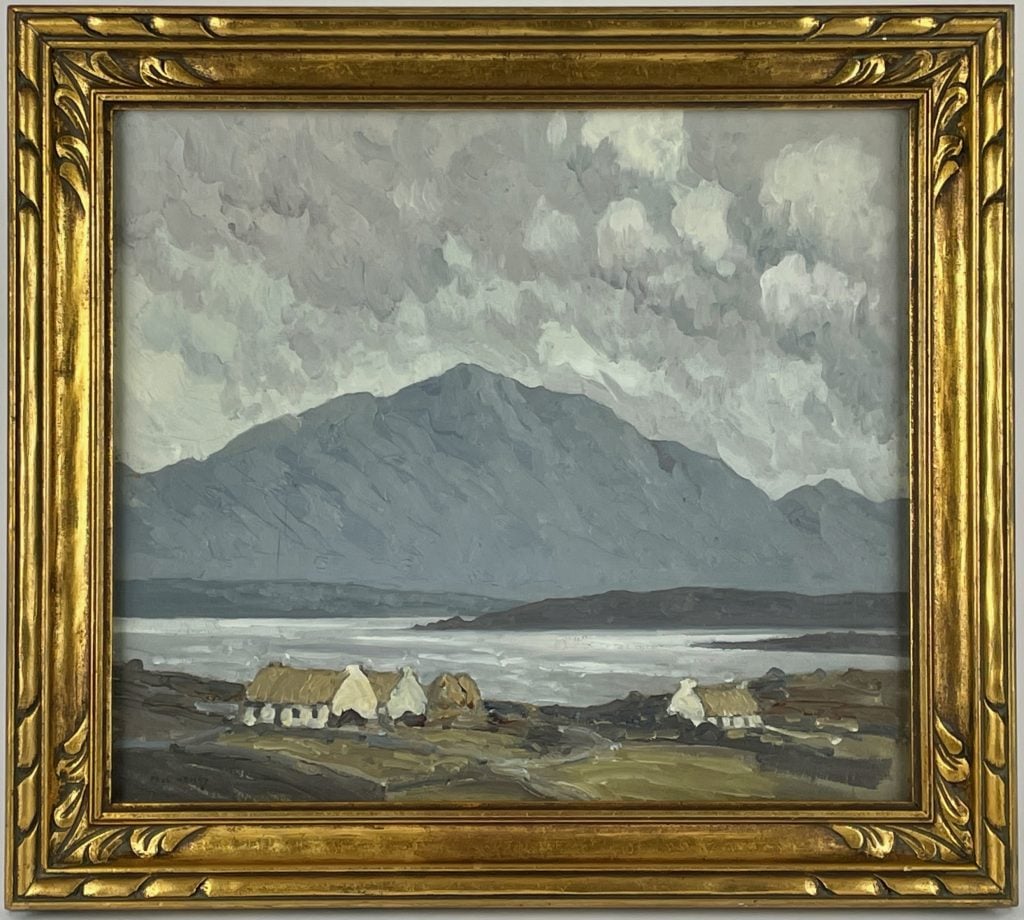Auctions
Two Paintings by Ireland’s Foremost Impressionist, Found Buried in an Ohio Storage Unit, Could Fetch $60,000 at Auction
The family had owned the works for generations, but thought they were worthless prints.

The family had owned the works for generations, but thought they were worthless prints.

Sarah Cascone

An Ohio family got more than they bargained for when they consigned their parents’ estate to auction. In the back of the storage unit lay a forgotten pair of artworks, long assumed to be inexpensive prints. In fact, they were a pair of genuine oil paintings by Paul Henry (1876–1958), Ireland’s foremost Impressionist artist. The rediscovered works are expected to fetch at least $60,000 when they come up at auction next month.
When Cincinnati auction house Caza Sikes got the call to sell the collection of Carol and Robert Kane, it was told that the couple had been enthusiastic travelers and art collectors, with a large selection of Chinese ceramics and a few modern art pieces: a Marc Chagall lithograph, a Saul Steinberg ink drawing, and a Roy Lichtenstein screenprint.
But after a long day of examining the contents of the storage unit, sifting through boxes of jewelry, sterling silver, antique rugs, and pottery, Will Sikes, a partner at the family-run auction house, immediately suspected that the Henry paintings, lying forgotten in a back corner, were something special.
“The consignor knew almost every piece by heart, and he said ‘Oh, I think those are a couple of prints—you are probably not going to want those,” Sikes told Artnet News. “My brother Graydon is an Antiques Road Show appraiser, and he recognized right away that they weren’t prints and they were Paul Henry.”

Carol and Robert Kane of Oxford, Ohio, were art lovers and collectors. But a pair of Patrick Henry paintings they inherited proved by far the most valuable works in their estate. Photo courtesy of Caza Sikes.
The consignor nearly fainted when he got the news, reports the Irish Times. The Henry works proved by far the most valuable in the entire estate.
Known for his idealized landscapes of the Irish countryside, Paul Henry “is the one artist that every single single Irish collector must have in their collection,” Sikes added. “He’s held very near and dear by the Irish people for his ability take that point in time and the beautiful countryside and express it through his paintings.”
The artist’s record at auction is £622,500 ($861,591), set just last month at Christie’s London for Mountains and Lake, Connemara, according to the Artnet Price Database.
The record-setting canvas measured 28 by 32 inches, compared to just 13 by 15 for the newly discovered Ohio Henrys. And although similarly sized works by the artist have hit six-figure prices in recent years, Caza Sikes opted for quite conservative estimates of just $30,000 each, for the paintings at its “September 2021 Estates + Collections” auction on September 8.
But the paintings, which were previously undocumented, are extraordinarily well-preserved, and “very much in his prime style with the subject matter most desirable by Henry,” Sikes said.
In Connemara and an untitled view of a Connemara landscape both depict the Connemara coast in Western Ireland, one of Henry’s recurring subjects. The latter work is nearly identical to the artist’s well-known painting A Blue Day.
But the Kane family had owned the works for so many generations that their significance had been forgotten.

Paul Henry, In Connemara. Photo courtesy of Caza Sikes, Cincinnati.
The consignor’s great-grandfather Patrick McGovern emigrated to the U.S. from Blacklion, Ireland, in 1891, and became a successful civil engineer, serving as the chief structural architect and tunnel builder for the Philadelphia, Boston, and New York subways and aqueducts.
McGovern or his daughter Mary Geraldine Kane probably purchased the works in the early 20th century, either during visits home to Ireland or from Henry’s New York dealer, James Healy.
And while Henry didn’t typically sell his work with glass framing, someone in the family had the good sense to take the works to the Framing Guild New York’s Madison Avenue early on. That kept the paintings in excellent condition, protected from dust and grime over the 100-odd years that followed.
“To find something pristine that’s been behind glass, that’s been out of the public eye for a century, with a really interesting provenance, coming from an Irish immigrant who made his life and career here in the United States—is very rare for one of Henry’s works, let alone two of them,” Sikes said. “It was really truly a grand surprise at the end of that day.”